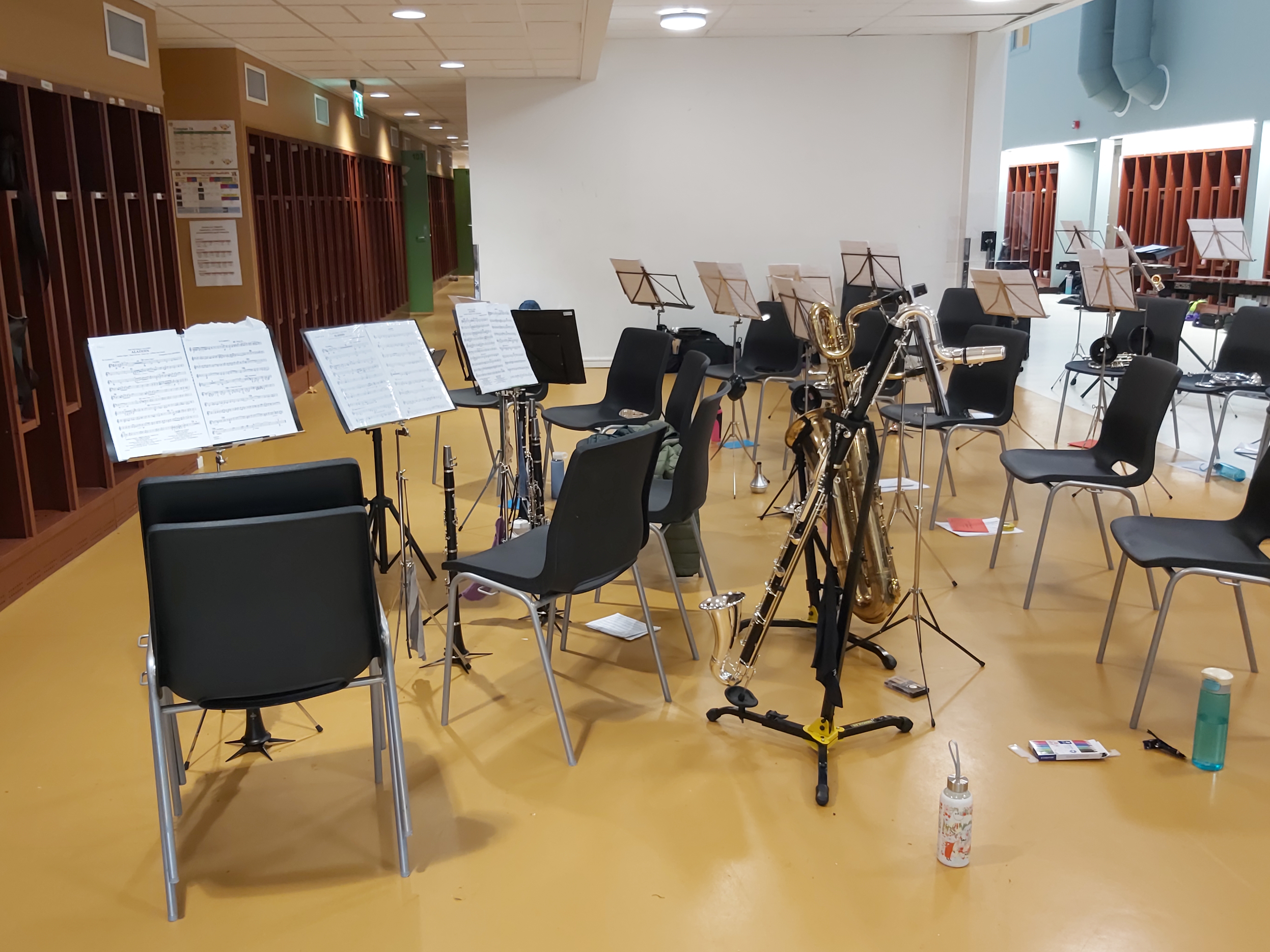Non-compulsory Instrumental Music Education in Poland and Norway
Perspectives on Accessibility, Curriculum Framework and Learning Goals in Two Different Music Education Systems
DOI:
https://doi.org/10.7577/njcie.6326Keywords:
comparative music education, music schools, instrumental students, instrumental music educationAbstract
This article compares non-compulsory instrumental music education systems in Norway and Poland, by describing their organisation, accessibility, educational goals, curriculum framework, and the target group, and discussing consequences the chosen form of organisation and vision might have for the users. The analysis of government documents and statistics shows that while Polish Music Centres and Norwegian Schools of Music and Performing Arts offer similar instrumental education for their users, in Poland there is also a highly specialised system of music schools providing goal-oriented professional tuition for young people at all educational levels. Analysis of the target groups and curriculum frameworks reveals that the concept of music school is understood differently in the two countries. Polish music schools prepare students to become musicians and do not serve as a leisure activity, in contrast to Norwegian Schools of Music and Performing Arts, which do not make strict demands of commitment and goal-oriented participation. Poland’s system is more structured and standardised, potentially leading to high levels of technical and musical proficiency, while Norway’s system is more flexible and inclusive, promoting broader educational and personal development goals.
Downloads
Metrics
References
Bartlett, L., & Vavrus, F. (2017). Comparative Case Studies: An Innovative Approach. Nordic Journal of Comparative and International Education (NJCIE), 1(1). https://doi.org/10.7577/njcie.1929
Berge, O. K., Angelo, E., Heian, M. T., & Emstand, A. B. (2019). Kultur + skole = sant: Kunnskapsgrunnlag om kulturskolen i Norge (TF-rapport nr.. 489). Telemarksforskning. https://www.telemarksforsking.no/publikasjoner/kultur-skole-sant/3487/
Bojus, J. E. (1972). Music Education in Poland [Doctoral dissertation]. University of Miami. Burnard, P., Dillon, S., Rusinek, G., & Sæther, E. (2008). Inclusive pedagogies in music education: a comparative study of music teachers’ perspectives from four countries. International Journal of Music Education, 26(2), 109-126. https://doi.org/10.1177/0255761407088489
Crossley, M. (2009). Rethinking context in comparative education. In R. Cowen & A. M. Kazamias (Eds.), International handbook of comparative education (pp. 1173-1187). Springer.
De Vugt, A. (2017). European perspectives on music education. In J. Rodríguez-Quiles (Ed.), Internationale Perspektiven zur Musik (lehrer) ausbildung in Europa (pp. 39-58). Universitätsverlag Potsdam.
Dogani, K. (2004). Teachers’ understanding of composing in the primary classroom. Music Education Research, 6(3), 263-279. https://doi.org/10.1080/1461380042000281721
Dymon, M. (2015). Muzyczna edukacja poza szkolnym systemem nauczania [Conference presentation]. EAS Visegard Doctoral Conference, Prague. https://czechcoordinatoreas.eu/DOCS/Teorie-a-praxe_HV_IV_2015.pdf#page=22
García, J. A., & Dogani, K. (2011). Music in schools across Europe: analysis, interpretation and guidelines for music education in the framework of the European Union. In A. Liimets & M. Mäesalu (Eds.), Music Inside and Outside the School (pp. 95-122). Peter Lang.
GUS. (2024a). Edukacja w roku szkolnym 2023/2024. https://stat.gov.pl/obszary-tematyczne/edukacja/edukacja/edukacja-w-roku-szkolnym-20232024-wyniki-wstepne,21,2.html
GUS. (2024b). Kultura i dziedzictwo narodowe w 2023 r. https://stat.gov.pl/obszary-tematyczne/kultura-turystyka-sport/kultura/kultura-i-dziedzictwo-narodowe-w-2023-roku,2,21.html
Jankowski, W. (2012). Raport o stanie szkolnictwa muzycznego I stopnia. M. a. D. Institute. https://nimit.pl/wp-content/uploads/files/Raport%20o%20stanie%20szkolnictwa%20muzycznego%20I%20stopnia.pdf
Kertz-Welzel, A. (2004). Didaktik of music: a German concept and its comparison to American music pedagogy. International Journal of Music Education, 22(3), 277-286. https://doi.org/https://doi.org/10.1177/0255761404049806
Kuciapiński, M. J. (2012). Pozaszkolne instytucje kulturalne wsparciem dla rodziny w sferze rozwijania aktywności muzycznej dzieci i młodzieży szkolnej. Pedagogika Rodziny, 2(3), 39-52.
Kunnskapsdepartementet. (2021). Musikk fordypning (MUS08‑02): Kompetansemål og vurdering. Utdanningsdirektoratet. https://www.udir.no/lk20/mus08-02/kompetansemaal-og-vurdering/kv559
Leikvoll, K. J. (2024). Bruk av komponering og improvisasjon i instrumentalundervisning på kulturskolen: tidstyv eller inngangsport til musikk-og notasjonsforståelse? Nordic Research in Music Education, 5, 67–89. https://doi.org/https://doi.org/10.23865/nrme.v5.6055
Ministry of Culture and National Heritage (2023). Framework teaching plans for artistic public schools and institutions. https://www.infor.pl/akt-prawny/DZU.2023.145.0001012,rozporzadzenie-ministra-kultury-i-dziedzictwa-narodowego-w-sprawie-ramowych-planow-nauczania-w-publicznych-szkolach-i-placowkach-artystycznych.html
Ministry of Culture and National Heritage. (n.d.). Kształcenie muzyczne. https://www.gov.pl/web/kultura/ksztalcenie-muzyczne2
Mitter, W. (2009). Comparative education in Europe. In R. Cowen & A. M. Kazamias (Eds.), International handbook of comparative education (pp. 87-99). Springer.
Nogaj, A. A. (2023). Psychological counseling services in music schools in Poland: History and current status. Musicae Scientiae, 27(4), 875-888.
Norges Musikkorps Forbund. (n.d.). Om Norges Musikkorps Forbund. https://www.korps.no/om-nmf
Norges Musikkorps Forbund. (2022). NMF Strategiplan 2022–2026. Norges Musikkorps Forbund.
Norsk Kulturskoleråd. (2016). Rammeplan for kulturskolen: Mangfold og fordypning. Kulturskolerådet.
Norsk Kulturskoleråd. (2025). Rammeplan for kulturskolen: Kulturskole for alle. Kulturskolerådet.
Opplæringslova. (2023). Lov om grunnskoleopplæringa og den vidaregåande opplæringa (LOV-2023-06-09-30). https://lovdata.no/dokument/NL/lov/2023-06-09-30
Osloskolen. (2024). Musikk på Majorstuen. Osloskolen. Retrieved 28.January from https://majorstuen.osloskolen.no/fagtilbud/musikk-pa-majorstuen-skole/musikk-pa-majorstuen-skole/
Osrodek Edukacji Muzycznej. (2025, January 28.). Ognisko Muzyczne. http://karlowicz.waw.pl/o-szkole/ognisko-muzyczne/
Phillips, D. (2006). Comparative Education: Method. Research in Comparative and International Education, 1(4), 304-319. https://doi.org/10.2304/rcie.2006.1.4.304
Pliszka, R. (2024). Pozalekcyjna edukacja muzyczna w rozwoju ucznia na przykladzie instytucji upowszechniania kultury w Slupsku i Koszalinie. Zeszyty Naukowe Panstwowej Akademii Nauk Stosowanych w Koszalinie, 6(24), 28-49.
Rodríguez-Quiles, J. (2017). Internationale Perspektiven zur Musik (lehrer) ausbildung in Europa (Vol. 4). Universitätsverlag Potsdam.
Utdanning.no. (2025, January 14). Videregående utdanning. https://utdanning.no/tema/utdanning/videregaende
Utdanningsdirektoratet. (2024a, 24 January). Elevtall i videregående skole – utdanningsprogram og trinn. https://www.udir.no/tall-og-forskning/statistikk/statistikk-videregaende-skole/elevtall-i-videregaende-skole/elevtall-vgo-utdanningsprogram/
Utdanningsdirektoratet. (2024b). Grunnskolens Informasjonssystem: Kulturskole https://gsi.udir.no/app/#!/view/units/collectionset/2/collection/110/unit/1/
Vinge, J., & Westby, I. A. (2021). Vurdering for læring i kulturskolens rammeplan. In S. N. Karlsen & S. Graabræk (Eds.), Verden inn i musikkutdanningene. Utfordringer, ansvar og muligheter (pp. 103-120). Norges musikkhøgskole.
Warszawskie Towarzystwo Muzyczne. (2025, January 22). Ogniska Muzyczne. https://warszawskietowarzystwomuzyczne.pl/ogniska-muzyczne/

Published
How to Cite
Issue
Section
License
Copyright (c) 2025 Katarzyna Julia Leikvoll

This work is licensed under a Creative Commons Attribution 4.0 International License.
Declaration on copyright
- The author/s will keep their copyright and right of reproduction of their own manuscript, with the work simultaneously licensed under a Creative Commons Attribution License, but give the journal a permanent right to 1) present the manuscript to the public in the original form in which it was digitally published and 2) to be registered and cited as the first publication of the manuscript.
- The author itself must manage its financial reproduction rights in relation to any third-parties.
- The journal does not provide any financial or other remuneration for contributions submitted.
- Readers of the journal may print the manuscripts presented under the same conditions that apply to reproduction of a physical copy. This means that mass reproduction of physical copies or production of copies for commercial purposes is not permitted without the agreement of the author/s.


